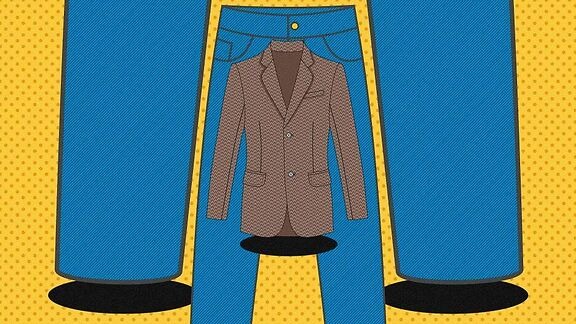- | 9:00 am
3 predictions for where fashion is heading in 2023
Here are three big trends for the new year, according to experts.

We live in strange times, sartorially speaking.
While fashion trends come and go, the pandemic caused wild swings in our clothing choices. At first, we wore pajamas all day; then we paired our sweats with Zoom-appropriate blazers and ruffle tops. When the world re-opened, the pendulum swung the other way. We embraced formality, buying dapper suits for interviews and fancy gowns for weddings.
Fashion experts say that in 2023 we’ll settle into a new normal: The pandemic gave us an increased appreciation for comfort, but we’re also keen to look more put-together. “We’re seeing this new middle ground emerge,” says Loretta Choy, chief merchandising officer at Stitch Fix, which crunched through data from four million clients. “We’re keen on looser, relaxed fits, but we’re also interested in returning to the classics of the modern wardrobe that we missed during the pandemic, like blazers, jeans, and trench coats.”
Here’s are three predictions for where fashion is heading in the new year.
YOU’LL DITCH THE SKINNY JEAN
It’s a well-known fact that jeans silhouettes go through cycles. In the ’70s, we embraced bell bottoms; in the ’90s, low-cuts were all the rage. Over the last decade, skinny styles reigned supreme, going as far as the legging-jean hybrid, unfortunately described as the jegging.
But the tide has now turned. In 2023, you’ll likely find yourself buying straight leg jeans. “We’ve been seeing customers move towards jeans with looser fits and wider leg openings,” says Amy Williams, CEO of the denim company Citizens of Humanity. “Jean styles are connected to shoe styles, and the wider legs are perfect for chunky lug boots, which are now in fashion.”
The rise of skinny jeans was influenced by improvements in fabric technology. Denim brands could incorporate increasing levels of stretch into jeans, allowing for a body-hugging denim style that mirrored a broader obsession with leggings. Sarah Ahmed, creative director of denim brand DL1961, says that as wider legs come back into style, brands like hers are continuing to infuse denim with stretch and ultra-soft fibers. This ensures that they retain their shape after the whole day of wear, particularly in the knees, which can get baggy. “Denim (went) through an evolution to create a polished look with maximum comfort and all-day wearability,” she says.





































